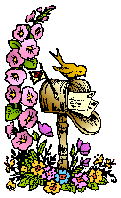
I’ve got a semi-unconventional review today. This book offers me more motivation than ever. With the toddler running around and the full-time job, plus the additional stress I’ve been under lately, I need a good kick in the butt to get me back to writing.
What I loved about Raymond’s book was her no-nonsense advice and her anecdotes about her own struggles with writing. She even shares some of the best moments she’s experienced when she was procrastinating. One major point that book bloggers already know, especially in this time of Twitter and other social media, that we need to disconnect from the Internet. My book is overflowing with post-it tabs, but here are a couple of my favorite passages:
“Being an Everyday Writer is not about putting daily words on a page but about seeing the world as a writer and recognizing the myriad ways in which your everyday life informs your work. And this, in turn, will put words on the page.” (page 2)
“Writing exercises can help our writing in ways we don’t know until we do them. They can, for instance, allow our minds to retreat from the puzzle of a current project and wander a bit, perhaps leading us back to the puzzle from a different angle and getting us closer to a solution.” (page 6)
Some of her practical advice includes creating a schedule that works for you with your work and childcare schedule and that it doesn’t have to be every day. Additionally, you have to remain open to revising the schedule and making sure that others in your life take your writing time as seriously as you do. Writers also need to set bigger goals and break that down into more manageable goals, and these goals should be reassessed at least quarterly to determine how much progress has been made. Another cool tool in the book is Raymond’s checklist for those writers who think they’ve finished a piece to make sure they’ve covered all the bases, including whether every scene is necessary and whether the point of view is consistent.
Everyday Writing: Tips and Prompts to Fit Your Regularly Scheduled Life by Midge Raymond is a slim book, just what writers need — practical advice, but not lengthy practical advice that causes them to procrastinate about their projects. Raymond’s writing style as engaging as her advice, and the writing prompts can be used for any project. What she offers most is the ability for writers to be flexible and not beat themselves up about it so long as they are meeting their own goals.

Midge Raymond’s short-story collection, Forgetting English, received the Spokane Prize for Short Fiction. Her stories have appeared in TriQuarterly, American Literary Review, Indiana Review, North American Review, Bellevue Literary Review, the Los Angeles Times magazine, and many other publications. Her work has received several Pushcart Prize nominations and received an Artist Trust/Washington State Arts Commission Fellowship.
Midge taught communication writing at Boston University for six years, and she has taught creative writing at Boston’s Grub Street Writers and Seattle’s Richard Hugo House. While living in Southern California, she held writing workshops and seminars at San Diego Writers, Ink, where she also served as vice president of the board of directors.
Midge lives in the Pacific Northwest, where she is co-founder of the boutique publisher Ashland Creek Press.




